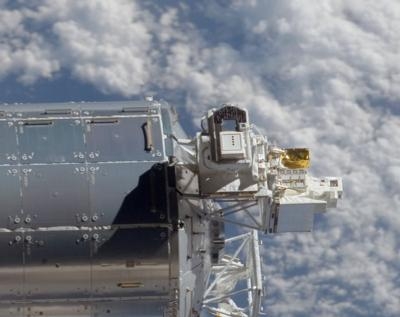Sun, Feb 19, 2017
Mission Observing The Sun Lasted Nine Years Aboard ISS
The ground control in Belgium has switched off a package that had been continuously watching the Sun from the International Space Station for nine years.

‘Solar’ has been measuring most of the radiation emitted by our closest star across the electromagnetic spectrum. Built to run for only 18 months, it was still working until today – exceeding all expectations. Solar’s observations are improving our understanding of the Sun and allowing scientists to create accurate computer models and predict its behavior.
To predict how the Sun behaves, scientists create complex computer models to build a virtual star. With more observations, scientists can fine-tune their models. Modelling and predicting the Sun’s activity with precision is an important step towards understanding humankind’s effect on Earth’s climate.
Between 2012 and 2016, the Space Station turned itself five times to position Solar so that it could track the Sun without interruption for a complete solar day – around a month of Earth days.
It was the first time the Station changed attitude for scientific reasons alone and a huge achievement – it’s not every day that you move a 450 metric ton orbital outpost.
Solar has been moved to a parked position where it was secured with a pin. Even during its last days, Solar was delivering important data. The teams at the control centre in Brussels, Belgium, used the final moments to stress the hardware to its limits and gain a better understanding of how the observations have been affected by age and the intense changes in temperature it endures outside the Station. Using this extra information, researchers are developing software that will improve calibration of parts of the data.
“After all these years of gaining valuable information about our Sun it is an emotional moment for the team, but Solar has far exceeded everyone’s expectations,” said ESA’s project leader, Astrid Orr. “This kind of research does not deliver pretty pictures, but numbers. I tip my hat to the researchers who patiently sort through the wealth of data – this field of science may seem tedious and unexciting to the outside world, but climate studies heavily rely on these data to understand the world we live in and how we are shaping it.”
(Source: ESA news release. Image courtesy ESA)
More News
He Attempted To Restart The Engine Three Times. On The Third Restart Attempt, He Noticed That Flames Were Coming Out From The Right Wing Near The Fuel Cap Analysis: The pilot repor>[...]
Make Sure You NEVER Miss A New Story From Aero-News Network Do you ever feel like you never see posts from a certain person or page on Facebook or Instagram? Here’s how you c>[...]
From 2009 (YouTube Edition): Leading Air Show Performers Give Their Best Advice for Newcomers On December 6th through December 9th, the Paris Las Vegas Hotel hosted over 1,500 air >[...]
Aero Linx: NASA ASRS ASRS captures confidential reports, analyzes the resulting aviation safety data, and disseminates vital information to the aviation community. The ASRS is an i>[...]
“For our inaugural Pylon Racing Seminar in Roswell, we were thrilled to certify 60 pilots across our six closed-course pylon race classes. Not only did this year’s PRS >[...]
 NTSB Final Report: Rutan Long-EZ
NTSB Final Report: Rutan Long-EZ ANN FAQ: Turn On Post Notifications
ANN FAQ: Turn On Post Notifications Classic Aero-TV: ICAS Perspectives - Advice for New Air Show Performers
Classic Aero-TV: ICAS Perspectives - Advice for New Air Show Performers ANN's Daily Aero-Linx (06.28.25)
ANN's Daily Aero-Linx (06.28.25) Aero-News: Quote of the Day (06.28.25)
Aero-News: Quote of the Day (06.28.25)



